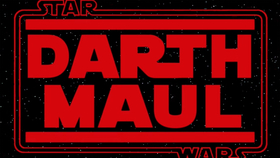The rise of rubber flooring: from industrial material to interior design trend
The rise of rubber flooring has transformed it from an industrial material to an interior design trend. Once used primarily for garage and basement floors, rubber flooring has become a popular choice for homes and businesses alike. Its versatility makes it suitable for a wide range of applications, from sport courts to yoga studios. Moreover, rubber flooring's durability, easy maintenance, and resistance to water and stains have contributed to its rising popularity. As a result, rubber flooring has become an essential element in achieving a functional and aesthetic balance in modern interior design.
In recent years, rubber flooring has made a significant entrance into the world of interior design, transitioning from its industrial roots as a practical and durable surface material to a fashionable and innovative design element.
The term "rubber flooring" refers to a type of flooring made from natural or synthetic rubber. It is highly resilient, easy to clean, and resistant to water, stains, and slips. The material's versatility and durability have made it a popular choice for both commercial and residential spaces, particularly in high-traffic areas such as entryways, hallways, and playrooms.
Historically, rubber flooring was primarily used in industrial settings, providing a sturdy and safe walking surface for factory workers and other professionals. It was often associated with its practical benefits, such as being resistant to chemicals, oils, and other contaminants commonly found in manufacturing environments. However, in recent years, rubber flooring has undergone a significant transformation.
The evolution of rubber flooring into a design trend is primarily driven by its unique aesthetic qualities. Designers have started to appreciate the material's versatility, as it can be molded into various textures and patterns that add visual interest to a space. From traditional solid colors to more complex patterns and designs, rubber flooring offers a wide range of visual possibilities.

Moreover, rubber flooring's environmental credentials have also contributed to its rise in popularity. Many manufacturers now use recycled materials in their production process, reducing the material's environmental footprint. This sustainability aspect aligns with the current trend towards eco-friendly building practices and living spaces.
Another factor contributing to the rise of rubber flooring is its ease of installation and maintenance. The material can be easily cut and shaped to fit any space, and it is relatively easy to clean and maintain. This accessibility encourages both homeowners and businesses to explore this unique flooring option, further contributing to its growing popularity.
However, the transition of rubber flooring from industrial material to design trend has not been without challenges. One significant obstacle is the perception that rubber flooring is solely used in sport or industrial applications, giving it a purpose-built image that is not always aligned with interior design aesthetics. However, as more designers and homeowners start to embrace the material, this perception is slowly changing.

In conclusion, the rise of rubber flooring as an interior design trend is not just about its practical benefits but also about its aesthetic appeal, sustainability credentials, and ease of installation and maintenance. The material's versatility and durability have made it a popular choice for both commercial and residential spaces, while its unique aesthetic qualities have added a new dimension to interior design. As the use of rubber flooring continues to grow in popularity, it is expected to become even more widely used in both traditional and innovative ways.
Articles related to the knowledge points of this article:
Wholesale Down Jackets: A Buyer’s Guide
The Splendid World of Piced-up Jackets
Flower-patterned羽绒服,时尚与保暖的完美结合



